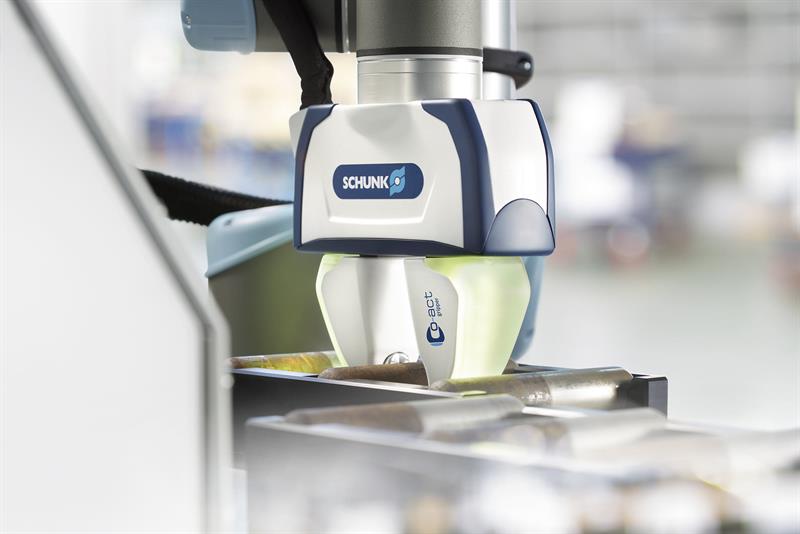The Co-act Gripper JL1, billed as the world’s first intelligent collaborative gripper, directly interacts and communicates with humans. Supported by a sensory aura and artificial intelligence, which is completely integrated within the gripper, the Co-act Gripper JL1 is able to permanently collect information on the gripped component and its environment, to process it and to carry out situation-dependent reactions.
Innovative kinematics that allows a parallel and angular grip ensure that part variants can be flexibly handled. Tactile sensors that are integrated in the fingers can monitor the grip and ensure that sensitive components are not damaged. Using specifically developed gripping strategies, the gripper adapts its behaviour in real time, regardless of whether a component or a human hand is gripped. A touch-screen and an integrated LED panel allow easy communication, while OPC UA interfaces allow the gripper to communicate with the robot and the higher level control unit. The Co-act Gripper JL1 was honoured in April at the Hannover Messe event with the Hermes Award for its high degree of innovation.

The Co-act Gripper JL1 adapts its behaviour in real time
Schunk has defined three central principles for its HRC grippers. First, a gripper will never cause injury during gripping. Second, a gripper must always recognise contact with humans. And third, a gripper must never drop the workpiece. Depending on the application, different technologies and components are used to support this. The basic version of a so-called inherent HRC gripper includes a limitation of the gripping force, which is activated in situations of danger and limits the gripping force to 140 N. In addition, a HRC compatible design with rounded corners and edges reduces the risk of injury.
In the future, it will be possible to equip the Co-act Grippers with additional features such as secure drives to ensure heavy parts are reliably held in the event of an emergency stop. An environment sensor can also permanently control the environment of the gripper. Intelligent software evaluates the sensor signals and processes them.
The safety directive for industrial robots, DIN EN ISO 10218, is the basis for the Schunk Co-act series and the aspects of the future DIN EN ISO 20218 have already been taken into consideration. Beside the SVH 5-finger hand, which is already certified and approved for collaborative operation by the German Social Accident Insurance (DGUV), certification of further Schunk co-act grippers will probably be finished at the end of 2017.
According to Schunk, it will become more common in the future to separate parts of a process and divide the tasks between humans and robots. This applies in areas where full automation will be difficult to implement or whether it is economically feasible. This particularly concerns applications where the quantities are too low for a fully automated solution and are too comprehensive for manual tasks or vice versa. The Schunk HRC solutions bring advantages for such scenarios by increasing productivity, ensuring a high degree of flexibility and reducing an employee’s workload. Moreover, they reduce the risk of injuries and ensure constant quality of reproducible processes independent from the operator’s daily condition.
